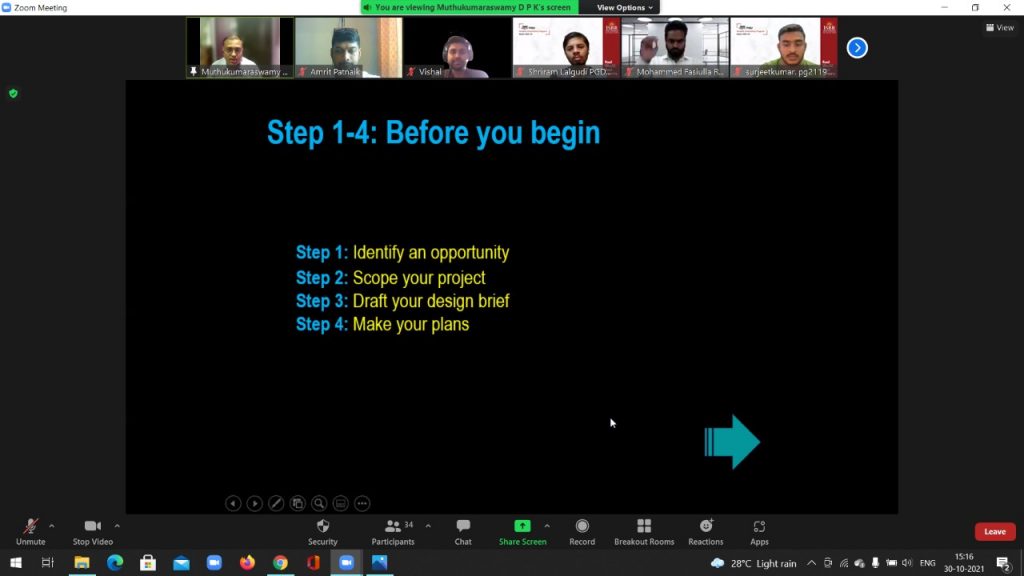OBJECTIVES
• To immerse students into the world of innovation as a systematic process of tackling relevant business and/or social problems.
• To provide a social and thinking space for the recognition of innovation challenges and the design of creative solutions. An innovation new ventures, value propositions, new products or services
• To recognise the latest and future issues and challenges in innovation.
• To expose the student with state-of-the-art perspectives, ideas, concepts, and solutions related to the design and execution of innovation driven projects using design thinking principles
KEY LEARNINGS
• The main focus of design thinking session was basically divided into 4 parts
1)Strategic innovation
2)People innovation
3)Functional innovation
4)Intellectual property
The session started with briefing about what innovation is all about and various factors that slow down innovation
We were given insights about all the 17 sustainable development goals.
Impact of innovation efforts on various factors such as revenue growth, increased productivity, customer satisfaction, profit margin etc
Importance of innovation strategy in terms of creating new customer expectations, high impact operational efficiency, generate new revenue streams for growth.
Discussed about types of innovation which is product innovation, service innovation and process innovation.
We learnt about innovation prerequisites which are creativity, experimentation, time and failure. Creativity is very important as it is the core aspect of any innovation, experimentation is crucial because you cannot find the best thing that works unless you find the things that does not work, failure which teaches a lot of life lessons in simple words failure is double the rate to your success.
Design thinking for growth can be done by asking 4 questions
- What is?
- What if?
- What wows?
- What works?
7.We were given an innovation challenge where we were divided into groups and were asked to make persona, journey map, empathy map, ideate, and make a napkin pitch for a writing instrument. It was a fun challenge and was very interesting to see different teams come up with innovative ideas with regard to the writing instrument
We were taught about the functional innovation methodology which consists of
- Decomposition
- Exploration
- Ideation
Implementation
• We got to learn about function diagrams how to draw them and various steps involved in making a functional diagram
• We were given information about numerous tools that are used in design thinking out of which 2 are predominantly used: elimination tool and combine tool
• We were given a lot at examples with respect to the new innovations in the current market and the scope of design thinking as a whole
• Overall, it was a very informative session and an eye opener for many of us because innovation and design thinking is the new future.

CONCLUSION
If we take a closer look at a business, we will come to a realization that the lines between product/services and user environments are blurring. If companies can bring out an integrated customer experience, it will open up opportunities to build new businesses. Design thinking is not just a trend that will fade away in a month. It is definitely gaining some serious traction, not just in product companies, but also in other fields such as education and science.
About ISBR: ISBR Business School, Bangalore-based, Top Class B School for PGDM or MBA, Consistently ranked as best B School in India, AICTE-CII Platinum Category, with multiple specializations.

